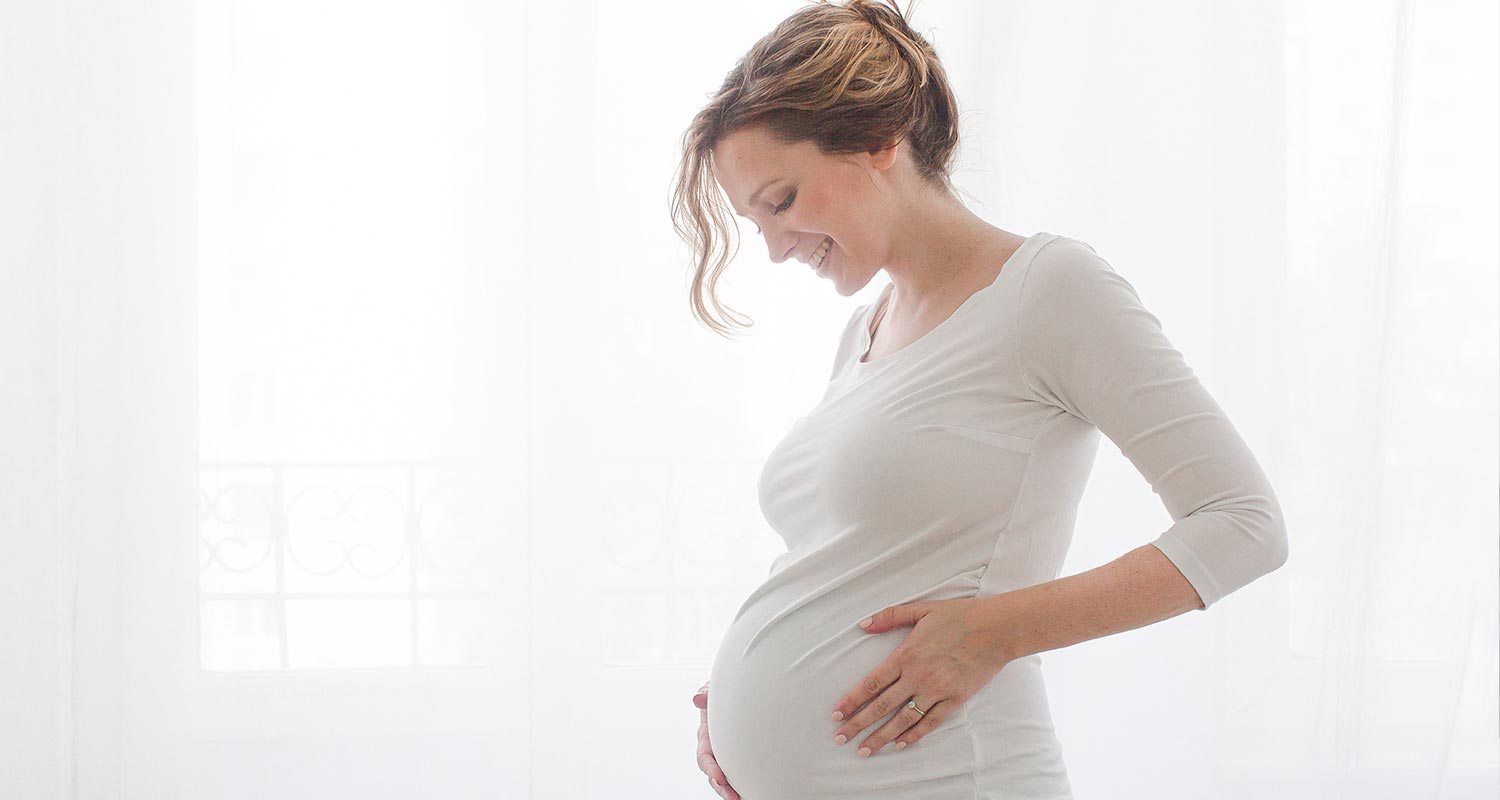Fetal structural anomalies are found in up to 3% of all pregnancies following routine prenatal care ultrasound screening1.
A diagnosis is difficult due to limited phenotypic information, but it is crucial to gain information about disease prognosis. Prenatal ExomeXtra® analysis assists in such cases by identifying the genetic cause of the disease.
The human exome contains all protein-coding regions (exons) of about 23,000 genes in the genome. The exome makes up only about 2% of the whole genome, but close to 85% of all known disease-causing variants are located within the exons. In addition, our proprietary design also covers more than 46,000 non-coding variants described as diseaserelevant in the databases HGMD and ClinVar.
We also screen for certain prenatal infections within our proprietary design, covering for diseases including Toxoplasmosis, Varicella, Cytomegalovirus, Fifth disease, Syphilis as well as account for pathogens such as Herpes Simplex 1 & 2. Such infections can cause abnormal ultrasound findings and may have serious, in some cases fatal, consequences for the fetus. Since these infections are not of genetic origin, they wouldn’t be detected by standard commercial exome sequencing kits.
Are you insured in Germany? Our colleagues at the Zentrum für Humangenetik Tübingen will gladly support you!
What We Offer with This Service
Our Promise to You
Service Details
Medical Report With:
- variants with clinical relevance (ACMG class 4, 5)
- genome-wide detection of copy number variants (CNV) as well as the analysis of the mitochondrial genome — more information
- interpretation and classification of variants based on ACMG guidelines
- assessment of genetic relevance for family planning
- recommendations for clinical disease management and further tests, when applicable
Additional Services
- ACMG gene panel — more information
- pharmacogenetics* — more information
- HLA typing* — more information
* This service can only be ordered for the parents.
Sample Report
Our Standard Sample Requirements
For the Fetus:
- amniotic fluid (native or cultured)
- chorionic villi (native or cultured)
- extracted fetal DNA
- abortion material
For the Parents:
- 1 ml–2 ml EDTA blood (recommended sample type)
- genomic DNA (1 µg–2 µg)
- DBS cards, buccal swabs, or saliva are also possible
Here you can find more information on how to ship your sample safely.
If prenatal trio exome diagnostics is not possible, we still need a sample from the mother to test for maternal cell contamination (MCC). Other sample material sources are possible on request. Please note: In case of insufficient sample quality, the analysis might fail. If you have more than one option of samples, please contact us (diagnostic-support@cegat.com), and we will assist you in choosing the optimal sample for your patient.
Prenatal Diagnostics – With and without Abnormal Ultrasound Findings
The exomes of both parents and the index patient are sequenced to enable comparative analysis. Out of 500 analyses for pregnancies with abnormal ultrasound findings, we identified the disease-causing variation in 38% by this method2. By now our cohort has increased substantially above 1,500 cases.
Diagnostics – With Conspicuous Ultrasound Findings:
Prenatal ExomeXtra® is used to determine the genetic cause of a disease in a fetus with abnormal ultrasound findings. In addition, we investigate the risk of serious health complications in the early stages of a child’s life. The analysis of the exomes of the fetus and both parents (trio exome diagnostics) enables a comparative analysis and increases the probability of identifying disease-causing variants.
Prenatal ExomeXtra® diagnostics enables the detection of variants that affect metabolism, for example, and offer the possibility of initiating treatment immediately after birth. Our unique analysis approach also allows the detection of variants with imprinting effects, variable expressivity, and reduced penetrance.
Diagnostics – Without Ultrasound Findings:
Prenatal ExomeXtra® can also be performed if prenatal ultrasound examinations are inconspicuous. A Study by Sukenik Halevy et al. shows that more than 50% of cases with postnatal neurocognitive disorders did not show prenatal ultrasound abnormalities3.
We have compiled a comprehensive panel of over 2,000 genes associated with severe early-onset diseases in cooperation with leading experts in prenatal clinical human genetics. After trio exome analysis and filtering, we screen all genes in the panel for pathogenic and likely pathogenic variants (ACMG class 4, 5) associated with severe, early-onset disease. Our experts also report all pathogenic and likely pathogenic variants outside this gene panel and discuss their clinical relevance if they lead to severe childhood disorders. In this way, we always consider the latest scientific findings.
Extra Insightful Results
The human exome contains all protein-coding regions (exons) of about 23,000 genes in the genome. The exome makes up only about 2% of the whole genome, but close to 85% of all known disease-causing mutations to be located within the exons. Our proprietary design also covers more than 46,000 non-coding variants described as disease-relevant in the databases HGMD and ClinVar. In addition, we screen for the risk of severe health complications in the early stages of a child’s life. The exomes of the parents and the index patient are sequenced, allowing a comparative analysis. The additional screening for variants outside the phenotype described enables the detection of variants that affect metabolism, for example, with the possibility of intervening immediately after birth.
Our Unique Analysis Strategy Considers Often Overlooked Issues, Such as Mildly Affected Parents
Standard trio exome diagnostics assumes that both parents are not affected. This filtering ignores that some parents are only mildly affected, for example, which would result in negative findings. We compensate for these situations with a unique analysis strategy that allows us to solve cases where the phenotype is caused by variants with
- imprinting effects
- variable expressivity
- reduced penetrance
In addition, variants in the mitochondrial genome are evaluated when the phenotype indicates the possibility of a mitochondrial disease. In the case of prenatal diagnostics, the analysis of mtDNA is always included.
References
1 Edwards, L. & Hui, L. First and second trimester screening for fetal structural anomalies. Seminars in fetal & neonatal medicine 23, 102–111; 10.1016/j.siny.2017.11.005 (2018).
2 Gabriel, H. et al. Trio exome sequencing is highly relevant in prenatal diagnostics. Prenatal diagnosis 42, 845–851; 10.1002/pd.6081 (2022).
3 Sukenik-Halevy, R. et al. The prevalence of prenatal sonographic findings in postnatal diagnostic exome sequencing performed for neurocognitive phenotypes: A cohort study. Prenatal diagnosis 42, 717–724; 10.1002/pd.6095 (2022).
Further Information
The Evolution of ExomeXtra®
5 years of ExomeXtra® with Dr. Florian Battke
Study: Prenatal Trio Exome Sequencing Clarifies Ultrasound Abnormalities with a Solution Rate of 38%. Continue reading
Webinar: Learn How We Can Help You Solve Complex Patient Cases
Webinar: Better than exome, smarter than genome
Identifiy the disease-causing alteration in a fetus
Downloads
Contact Us
Do you have a question, or are you interested in our service?
Diagnostic Support
We will assist you in selecting the diagnostic strategy – for each patient.





